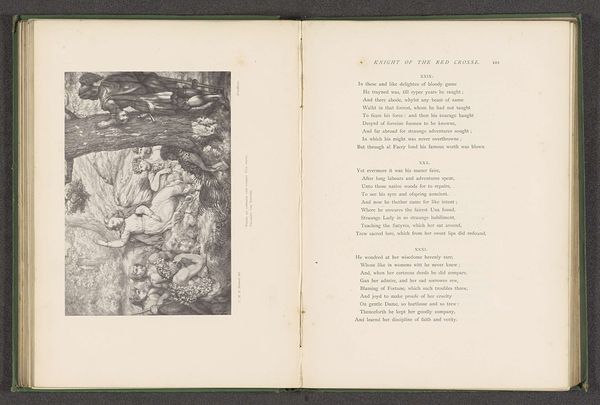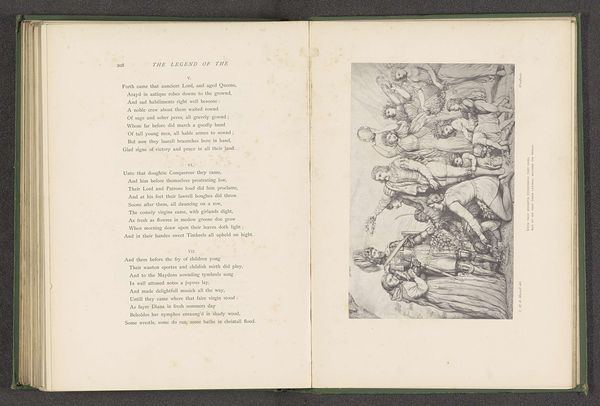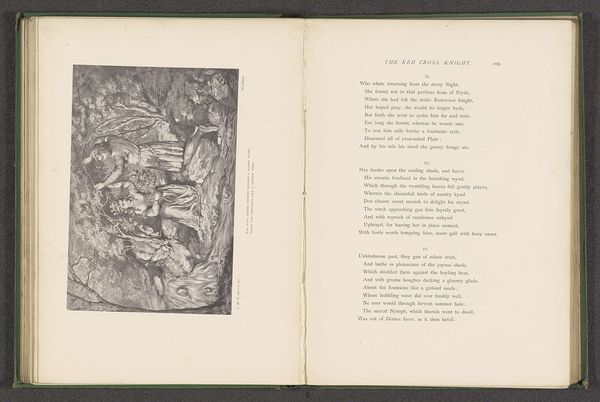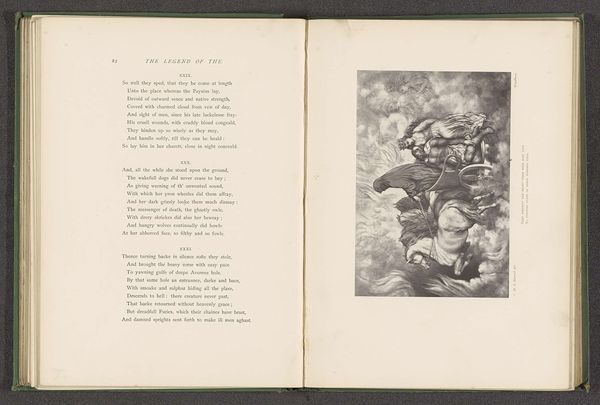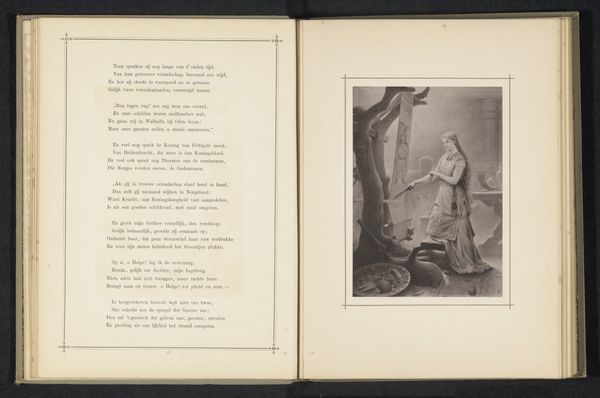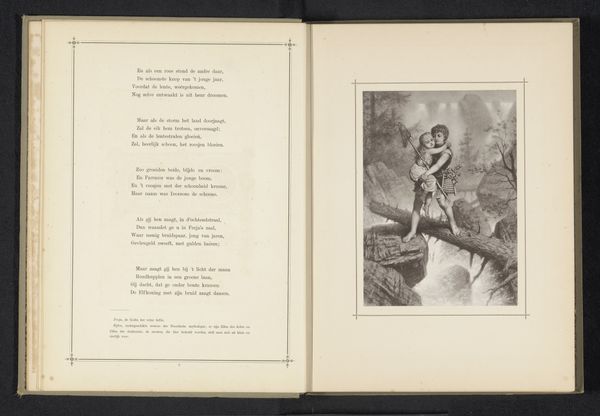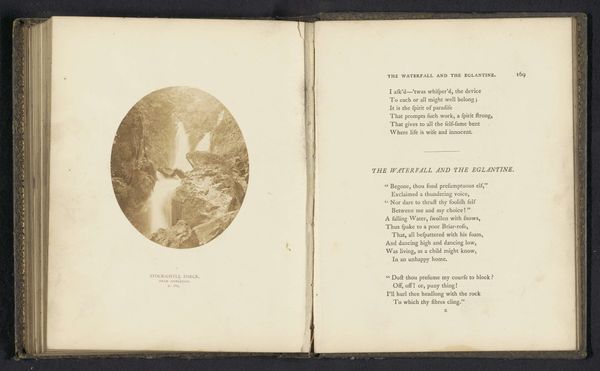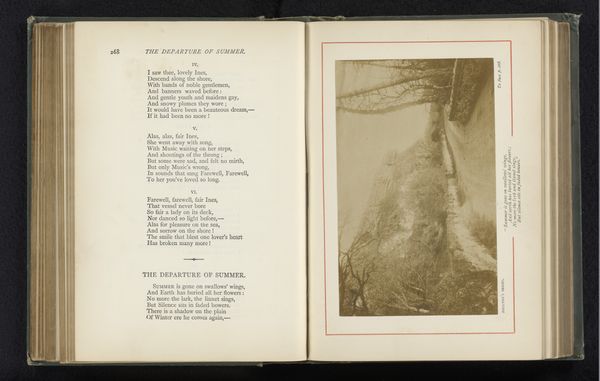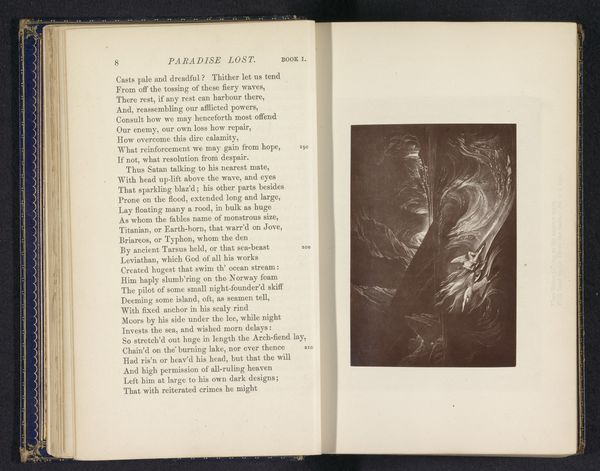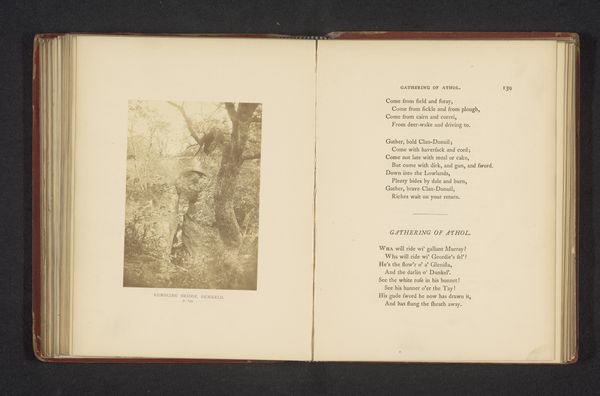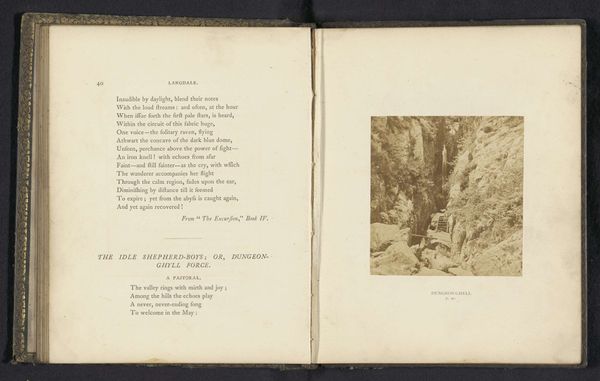
Fotoreproductie van een tekening, voorstellende Redcrosse en Duessa naast een bloedende boom before 1871
0:00
0:00
print, paper, engraving
#
narrative-art
# print
#
figuration
#
paper
#
history-painting
#
engraving
Dimensions: height 112 mm, width 164 mm
Copyright: Rijks Museum: Open Domain
Editor: So, here we have a photo reproduction of a drawing made before 1871, titled "Redcrosse and Duessa Beside a Bleeding Tree," presented as an engraving on paper. The figures seem frozen in a strange tableau. I find the whole scene quite eerie. What story do you think it's trying to tell? Curator: Eerie is the perfect word. It feels plucked straight from a fever dream! Considering the title and the period, this likely illustrates a scene from Edmund Spenser's *The Faerie Queene*, a fantastical allegorical poem brimming with knights, damsels, and moral quandaries. Redcrosse, the knight, often embodies holiness, and Duessa usually represents deceit. See how the tree 'bleeds'? That hints at a deeper wound, perhaps spiritual corruption. It asks us, doesn't it, where true beauty and goodness lie? Editor: So the 'bleeding tree' is a metaphor? Is this how narrative art traditionally works, layering symbolism like this? Curator: Exactly! Think of it as visual poetry. Artists would use familiar tropes to convey complex ideas to their audience. This is an early way people experienced 'special effects' if you like, so a lot relies on learned codes and symbols. It challenges us to decipher the meaning. And doesn't it make you want to delve deeper into Spenser's world to unlock its secrets? Editor: It does! I definitely have a new appreciation for the layers within these seemingly simple illustrations. I initially saw a kind of romantic tableau, but it is a morality tale instead! Curator: Precisely! The beauty of art lies in its ability to continuously surprise and teach us, even across centuries.
Comments
No comments
Be the first to comment and join the conversation on the ultimate creative platform.
